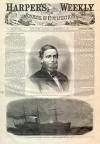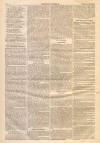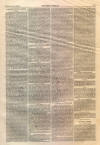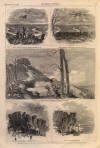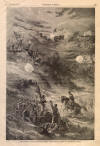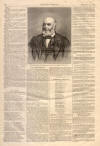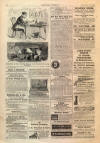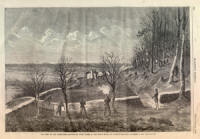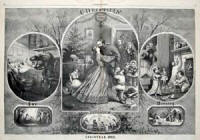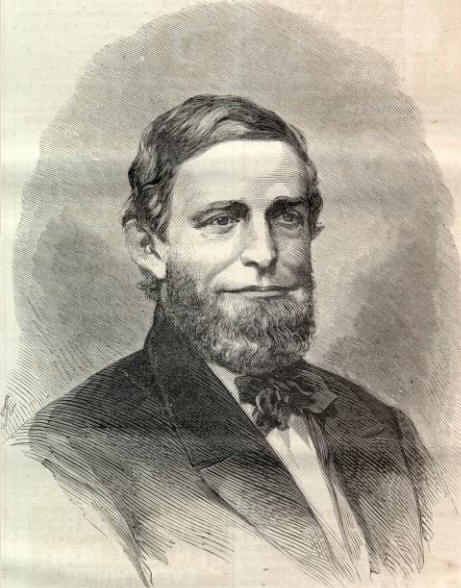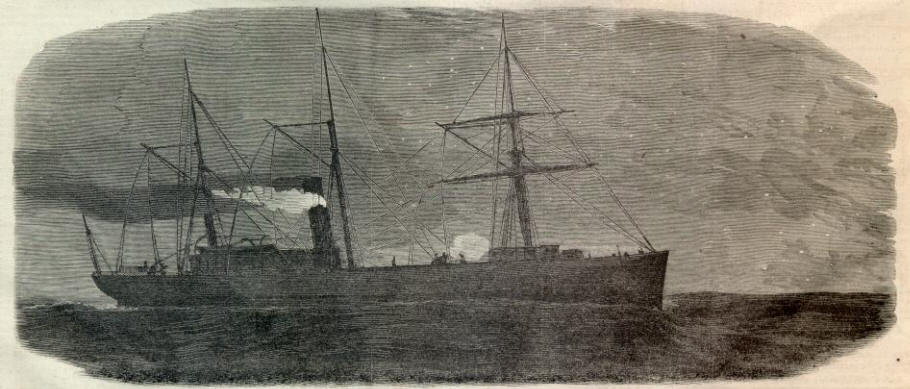|
This Site:
Civil War
Civil War Overview
Civil War 1861
Civil War 1862
Civil War 1863
Civil War 1864
Civil War 1865
Civil War Battles
Confederate Generals
Union Generals
Confederate History
Robert E. Lee
Civil War Medicine
Lincoln Assassination
Slavery
Site Search
Civil War Links
Civil War Art
Mexican War
Republic of Texas
Indians
Winslow Homer
Thomas Nast
Mathew Brady
Western Art
Civil War Gifts
Robert E. Lee Portrait
|
NEW YORK, SATURDAY, DECEMBER 26, 1863.
SINGLE COPIES SIX CENTS. $3,00 PER YEAR IN ADVANCE.
Entered according
to Act
of Congress, in the Year
1863, by Harper & Brothers,
in the
Clerk's Office
of the District Court for the Southern District of New York.
HON. SCHUYLER COLFAX, THE NEW SPEAKER OF THE HOUSE.—[PHOTOGRAPHED BY
MATHEW
BRADY.]
HON. SCHUYLER
COLFAX,
THE NEW SPEAKER.
WE give on this page a Portrait, from a photograph
by Brady, of the Hon. SCHUYLER COLFAX, who has just been elected Speaker
of the House of Representatives. Mr. COLFAX was born in New York City on the
23rd of March, 1823, and is descended from General SCHUYLER and Captain COLFAX,
both of whom fought in the Revolution. At thirteen
years of age he removed to Indiana, where he soon began life as a printer, in
which humble capacity he rose to a position of influence and honor. About twenty
years ago he became the proprietor of
The South Bend Register, and as a necessity of his position became
connected with the politics of his State. His political connection was with the
Whig party, so long as it retained its organization, after which he became an
earnest Republican.
Mr. COLFAX has now been a member of. Congress for nearly ten years. He was
elected Representative from Indiana in 1854, and has held the office ever since.
In the thirty-fifth Congress he was chosen Chairman of the Committee on
Post-offices and Post Roads, and for one or two years past he has been one of
the Regents of the Smithsonian Institute.
In his personal appearance he is a little below the medium height, has dark
eyes and hair, and a large forehead. He is a fluent speaker, distinct in his
utterance, and impressive. He is very bland and courteous in demeanor, and kind
and affable in all his social relations. On the 7th of December, 1863, he was
elected Speaker of the House. Although the position was never of greater moment
than in the present session, yet only a single ballot was cast, the result of
which was the election of Mr. COLFAX by a vote of 101. to 81. This decided
vote settles at once all doubt as to the firm purpose of the House to support
the Administration.
CAPTURE OF THE
STEAMER
"CHESAPEAKE."
ON Wednesday, December 9, H. B. Cromwell
Co., of this city, received a telegraphic dispatch
from the Mayor of Portland stating that the steamer
Chesapeake, owned by them,
had been captured twenty miles north-northeast from Cape Cod, at half past one
o'clock, Monday morning, by British
pirates, who had started
from New York as passengers. The
Chesapeake,
of which we publish a sketch on this page,
was on her way to Portland, Maine.
From statements made by Captain Willett, who commanded the steamer, we learn
that the piratical party consisted
of fifteen persons, headed by a Mr. Osborne, a coast pilot from St.
John, New Brunswick. The whole party
concerned in the perpetration of this daring outrage—an outrage which did
not stop short of
cold-blooded murder—was made up
of British
subjects, residents of St. John and Carleton, New Brunswick. The seizure
took place in the following
manner :
The Captain had retired for the night. The second engineer (Owen Shaffer) had
charge of the
engine, and the chief mate (Charles
Johnson) held the watch. At a quarter past one the pirates were up and
doing. The first notification of their presence was given in the deliberate
and unnecessary murder of Shaffer, who
had just returned from oiling the engine when he received a mortal wound
in the neck. Johnson,
the mate, was going to the pantry, and witnessed the deed. On his way to the captain's
room he was himself fired at, and received two wounds, one in the arm and
another in the knee. He succeeded in arousing the captain, who, soon after his
arrival on deck, was put in irons, having been fired at fifteen or twenty times,
but, strange to say, without injury. The
chief engineer (James Johnson) also was wounded. In all these cases of firing at
the officers of the Chesapeake there was no attempt at parley, no warning of any sort : the
pirates were sheer cowards. The officers being all secured—one
of them killed, two wounded, and the others put in irons—the helmsman and
third engineer alone being left at their posts, Osborne took charge of the
vessel, and all was quiet again. After the seizure the prisoners were treated
with great consideration, and the
bona fide passengers, five in number, were left at their liberty, on
condition of their non- interference. These five passengers were all old
sea-captains. All the ordinary operations usual on shipboard went on as usual
until Tuesday morning, when the vessel was brought to anchor in Seal Harbor, off
the island of Grand Menan. Thence she was brought up the bay toward St. John,
having received on board a new captain, viz., John Parker, of the privateer
Retribution. At Dipper
Harbor, twelve miles from St. John, the captives were allowed just ten
minutes to transfer themselves and their baggage to the pilot-boat,
which was towed up to within seven miles of St. John by the
Chesapeake, when the latter cast off tow and returned down the bay, picking
up on the way a schooner supposed to
have had guns, ammunition, coal, etc., on board for the new pirate.
These pirates gave Captain Willett a copy of "Orders from the Confederate
Government," which is without
official seal—a mere fabrication, which will not save the rogues from hanging if
they are caught. Similar plots, it is believed, have been formed against other
vessels. The
Chesapeake was built in 1852, by J.
A. Westervelt, and
is 460 tons burden.
CAPTURE OF THE
STEAMER "CHESAPEAKE" BY BRITISH
PIRATES,
DECEMBER 7, 1863.
We acquired this leaf for the purpose of digitally
preserving it for your research and enjoyment. If you would like
to acquire the original 140+ year old Harper's Weekly leaf we used to
create this page, it is available for a price of $155. Your
purchase allows us to continue to archive more original material. For
more information, contact
paul@sonofthesouth.net
|
